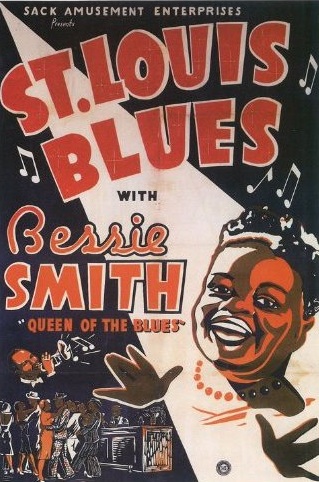|
|
Originally posted 1/22/2020. In honor of the 10th anniversary of the DMDB blog on January 22, 2019, Dave’s Music Database launched its own Hall of Fame. This is the fifth set of song inductees. These are the ten most-recorded songs from 1890-1954, according to Pop Memories. See full list here. While the list is not focused on a specific act for each song, the inductees are the highest-rated versions of the song in Dave’s Music Database. Not listed here is previous inductee “White Christmas” by Bing Crosby. |
Fred Astaire “Night and Day” (1932)Inducted January 2020 as “Top 10 Most-Recorded Songs from 1890-1954.” |
| When it comes to standards, this song, which has been called “one of the greatest love ballads ever written,” NPR stands second only to “Star Dust.” MM Cole Porter, whose name is “almost a generic term for witty show songs,” LW wrote it for the Broadway musical Gay Divorce. After Fred Astaire performed it for the show and film, his recording became the first and most successful of seven charting versions between 1932 and 1946. PM Read more. |
Bing Crosby “Silent Night” (1935)Inducted January 2020 as “Top 10 Most-Recorded Songs from 1890-1954.” |
| Father Joseph Mohr wrote a poem called “Stille Nacht, Heilige Nacht” and his friend Franz Gruber worked it up for guitar SF for performance at the 1818 Christmas Eve service. Since then, it has been translated into more than 44 languages, WK and became the most recorded song of the first half of the 20th century. PM The best known version is the 1935 recording by Bing Crosby with sales estimated as high as 30 million. PM Read more. |  |
Tommy Dorsey “All the Things You Are” (1939)Inducted January 2020 as “Top 10 Most-Recorded Songs from 1890-1954.” |
| The Broadway musical comedy Very Warm for May was the last hurrah for famed composer Jerome Kern. Sadly, it was a commercial failure, closing after only 59 performances. SB However, “All the Things You Are” from the show became a #1 hit for Tommy Dorsey and was followed by two more charted version in 1940. In a 1964 Saturday Review poll, more composers named the song as their favorite than any other. TY Read more. |  |
Marion Harris “Tea for Two” (1925)Inducted January 2020 as “Top 10 Most-Recorded Songs from 1890-1954.” |
| This was introduced by Louise Groody and John Barker in the Broadway musical comedy No, No, Nanette. JA Marion Harris had the first charted version, taking it to #1 in 1925. It “is one of the most recorded standards of Tin Pan Alley,” JA having been covered by musicians as diverse as Russian classical composer Dmitri Shostakovich and jazz pianist Art Tatum (#18, 1939). Read more. |  |
Coleman Hawkins “Body and Soul” (1940)Inducted January 2020 as “Top 10 Most-Recorded Songs from 1890-1954.” |
| “Body and Soul” is “an all-time classic torch song” SF and “the most recorded jazz standard.” WK Multiple versions were recorded, but it was an instrumental version by Coleman Hawkins, who has been called “the father of the tenor saxophone,” NPR’09 which ranks highest. He showed “it was possible to modernize well-worn Tin Pan Alley standards” NPR and it “became one of the most important jazz recordings of all time.” JA Read more. |
Billie Holiday “Summertime” (1936)Inducted January 2020 as “Top 10 Most-Recorded Songs from 1890-1954.” |
| It has been widely reported and accepted for years that the Beatles’ “Yesterday” is the most recorded song of all time, but its four thousand or so recordings pale compared to the 67,000 of “Summertime,” GW written originally for folk opera Porgy and Bess. The only version to chart in the pre-rock era was Billie Holiday’s 1936 recording (#12). Broadway composer Stephen Sondheim called the lyrics for this and “My Man’s Gone Now” “the best lyrics in the musical theater.” WM Read more. |
Vess Ossman “The Old Folks at Home (Swanee River)” (1900)Inducted January 2020 as “Top 10 Most-Recorded Songs from 1890-1954.” |
| Stephen Foster wrote and published this minstrel song (also known as “Swanee River”) in 1851. It was the most popular song ever published at that time WM with sheet music sales estimated as high as 20 million. PM Nine versions charted between 1892 and 1937, with Len Spencer being first (#1, 1892). Vess Ossman, however, had the highest-ranked version with his #2 banjo instrumental take on the song. It became Florida’s state song in 1935. Read more. |  |
Artie Shaw “Stardust” (1941)Inducted January 2020 as “Top 10 Most-Recorded Songs from 1890-1954.” |
| Hoagy Carmichael’s first major songwriting success NRR was first written as “an up-tempo dance instrumental” NPR but Mitchell Parish added lyrics in 1929. Isham Jones took it to #1 in 1931, but Artie Shaw’s version was rated the favorite record of all time in a 1956 Billboad poll of disc jockeys. PM It has been recorded more than 2000 times LW in more than forty languages. RCG Read more. |
Bessie Smith & Louis Armstrong “St. Louis Blues” (1925)Inducted January 2020 as “Top 10 Most-Recorded Songs from 1890-1954.” |
| This has been called “the most important blues song ever written.” LW William Christopher Handy, who became known as “The Father of the Blues,” wrote it in 1914 after hearing a St. Louis woman complaining about her cheating husband. LW 15 versions charted over the next forty years. PM Marion Harris had the greatest success with it in 1920 (#1), PM but Bessie Smith’s version with Louis Armstrong is the highest ranked version. Read more. |  |








No comments:
Post a Comment